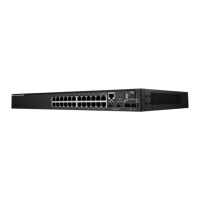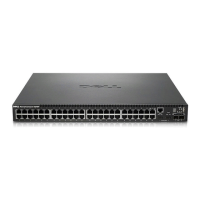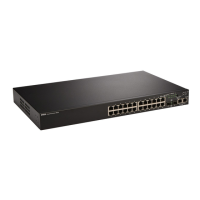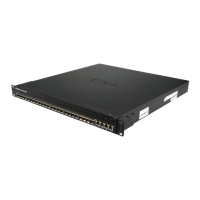510 Dell PowerConnect 55xx Systems User Guide
FILE LOCATION: C:\Users\gina\Desktop\Checkout_new\Maintenance Projects\Dell
Contax\CxUGSwitching_LAG.fm
DELL CONFIDENTIAL – PRELIMINARY 9/11/12 - FOR PROOF ONLY
Link Aggregation Overview
Link Aggregation optimizes port usage by linking a group of ports together to
form a single LAG (aggregated group). Aggregating ports multiplies the
bandwidth between the devices, increases port flexibility, and provides link
redundancy.
The device supports the following types of LAGs:
•
Static LAGs
— Manually-configured LAGs.
•
Link Aggregation Control Protocol (LACP) LAGs
— LACP LAGs
negotiate aggregating a port’s links with other LACP ports located on a
different device. If the other device ports are also LACP ports, the devices
establishes a LAG between them.
When you aggregate ports, the ports and LAG must fulfill the following
conditions:
• All ports within a LAG must be the same media type.
• A VLAN is not configured on the port.
• The port is not assigned to another LAG.
• Auto-negotiation mode is not configured on the port.
• The port is in full-duplex mode.
• All ports in the LAG have the same ingress filtering and tagged modes.
• All ports in the LAG have the same back pressure and flow control modes.
• All ports in the LAG have the same priority.
• All ports in the LAG have the same transceiver type.
• The device supports up to 32 LAGs, and eight ports in each LAG.
• Ports can be configured as LACP ports only if the ports are not part of a
previously configured LAG.
